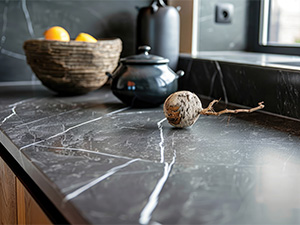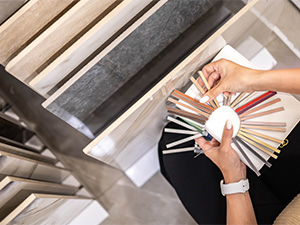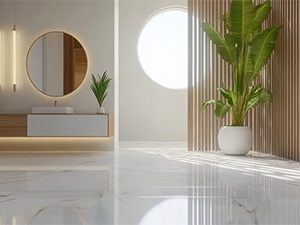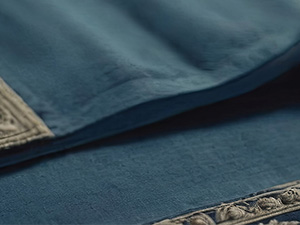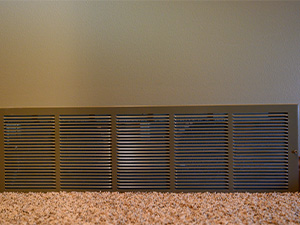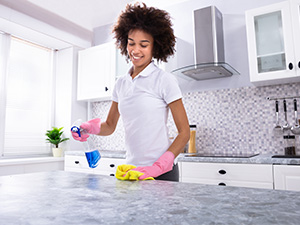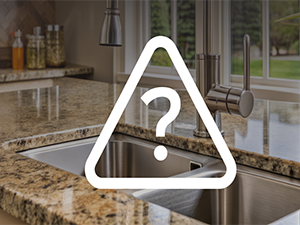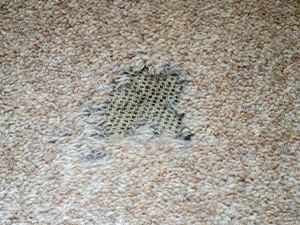Natural stone surfaces, such as marble, granite, terrazzo, and limestone, are beautiful, durable, and timeless. However, even the toughest stones are subject to wear and tear over time. Foot traffic, spills, scratches, and exposure to the elements can leave stone surfaces looking dull, scratched, or stained. That’s where professional stone restoration comes in.
If your once-lustrous floors or countertops have lost their shine, stone restoration can bring them back to life. Let’s explore how this transformative process works and the stunning results it can achieve.
-
What is Stone Restoration?
Stone restoration is a specialized process that involves cleaning, polishing, and repairing natural stone surfaces to restore them to their original appearance. Whether it’s countertops, floors, or walls, stone restoration can eliminate imperfections like scratches, stains, and etching, all while enhancing the stone’s natural beauty. Stone restoration can also include changing the finish from a high-polish to a satin finish, for example, and vice-versa.
It goes beyond regular cleaning or sealing – it’s about restoring the stone’s shine, texture, and structural integrity, often making it look better than new. This process is ideal for both residential and commercial spaces that rely on the timeless elegance of stone.
-
Common Issues with Stone Surfaces
Over time, natural stone can suffer from a range of common problems that diminish its appearance and durability:
-
- Dullness: Stone surfaces, especially high-traffic areas like floors, can lose their original shine. Foot traffic, dust, and everyday wear leave a dull finish.
- Stains and Etching: Acidic substances like coffee, wine, or lemon juice can cause etching on stone surfaces, leaving visible marks or dull spots.
- Scratches: Moving furniture, dropping heavy objects, or abrasive cleaning tools can leave scratches and gouges on the stone.
- Chips and Cracks: Even strong stones like granite and marble can develop chips or cracks over time, compromising their appearance and function.
These issues not only detract from the aesthetics of the stone but can also lead to long-term damage if left untreated. Stone restoration addresses these problems at their root.
-
The Stone Restoration Process: From Dull to Dazzling
Here’s a breakdown of the key steps in a typical stone restoration process:
-
- Inspection and Assessment: A professional will evaluate the stone’s condition, looking for areas that need repair, polishing, or sealing. Understanding the type of stone and its specific issues is essential for selecting the right restoration method.
- Deep Cleaning: Specialized cleaning solutions are used to remove embedded dirt, stains, and grime from the stone. This step prepares the surface for the polishing or repair work ahead.
- Grinding and Honing: If the stone surface has deep scratches, etches, or unevenness, a professional will use diamond abrasives to grind and hone the stone. This removes the damaged outer layer and restores a smooth, uniform surface.
- Polishing: After honing, the stone is polished to restore its natural shine. This process uses progressively finer abrasives to bring out the stone’s glossy, reflective surface.
- Crack and Chip Repair: For damaged areas, fillers are used to repair cracks and chips, blending them with the surrounding stone to create a seamless finish.
- Sealing and Protection: To protect the newly restored surface, a professional will apply a high-quality sealer. This protects against future staining and helps maintain the stone’s glossy finish for years to come.
-
Benefits of Professional Stone Restoration
Stone restoration offers more than just a visual upgrade – it provides several key benefits:
-
- Enhanced Aesthetics: Restoration revitalizes the natural beauty of stone, bringing out its vibrant colors and intricate veining. A polished stone surface can dramatically enhance the overall look of a room.
- Cost-Effective: Restoring stone is often far more affordable than replacing it. Professional restoration can make old, worn stone surfaces look brand new at a fraction of the cost of new installation.
- Longevity: Stone restoration repairs minor damage and adds a protective layer, increasing the lifespan of your stone surfaces. This preventative care ensures that your stone remains strong and beautiful for years to come.
- Increased Property Value: Restored stone surfaces can significantly improve the appeal of a home or business. Polished stone floors, countertops, and entryways create a luxurious impression that adds value to any space.
-
Why You Should Hire a Professional Stone Restoration Company
While some cleaning and polishing tasks can be done at home, professional stone restoration requires specialized tools, knowledge, and experience. Hiring a professional stone restoration company ensures:
-
- Expertise: Professionals understand the unique properties of each type of stone and can tailor the restoration process accordingly. They know how to achieve the best results without damaging the stone.
- Advanced Tools: Stone restoration requires professional-grade equipment, including diamond abrasives and high-quality polishers that produce a flawless finish.
- Time and Efficiency: A professional can complete the restoration process quickly and efficiently, minimizing disruption to your daily routine.
- When Should You Consider Stone Restoration?
If your stone surfaces look dull, stained, scratched, or chipped, it’s time to consider professional stone restoration. Regular maintenance such as sealing and cleaning can extend the time between restorations, but eventually, every stone surface benefits from a professional touch.
Conclusion
Stone restoration is a game-changer for anyone who wants to revive the beauty and longevity of their natural stone surfaces. From dull to dazzling, the transformation is remarkable, giving your floors, countertops, and other stone features a fresh, elegant look. If you want to enhance the appearance of your space while protecting your investment, professional stone restoration is the answer.
By Fred Hueston. This article is one of a series of articles written and published on behalf of Surface Care PRO Partners.

